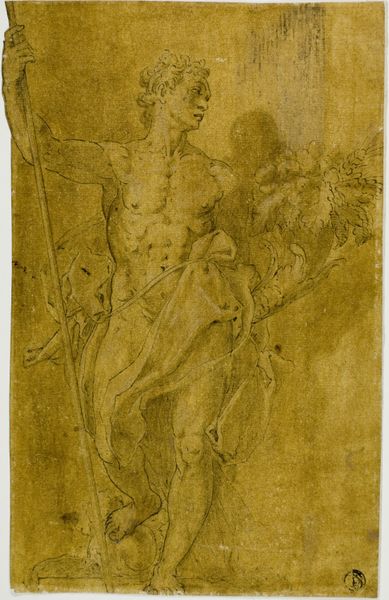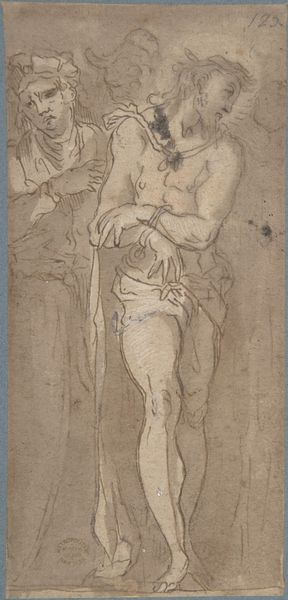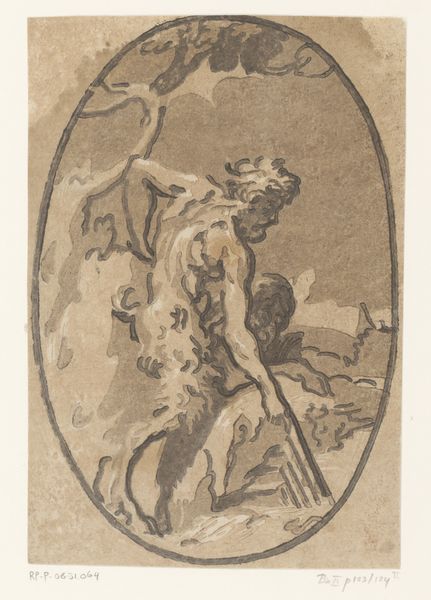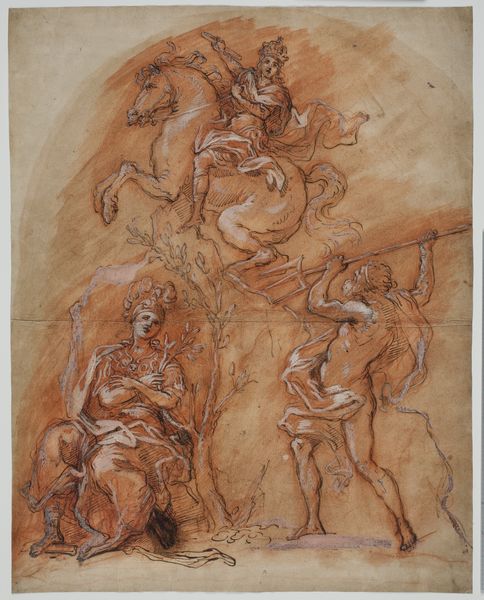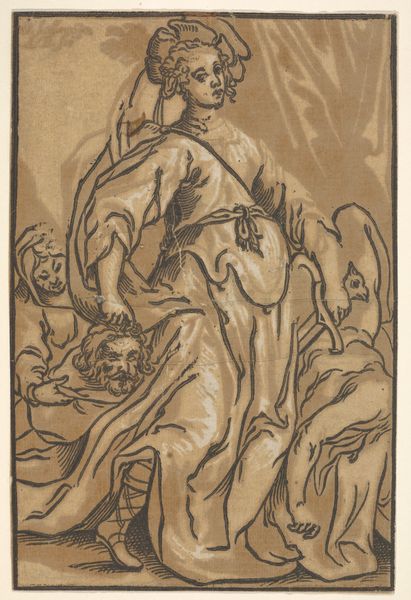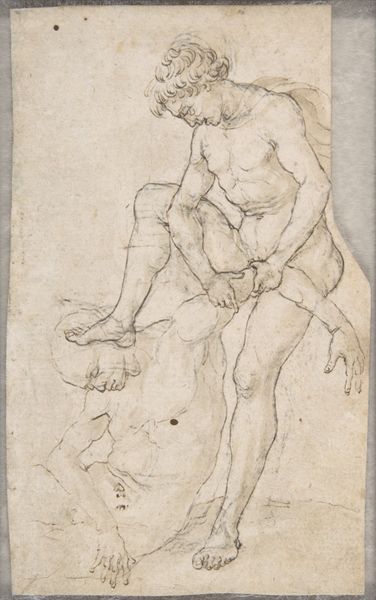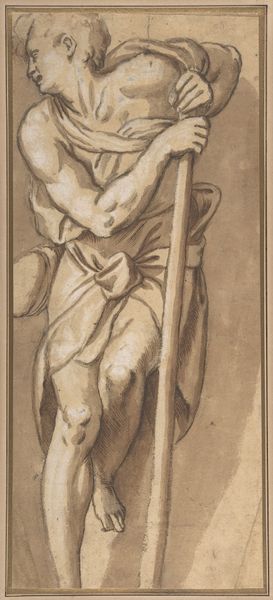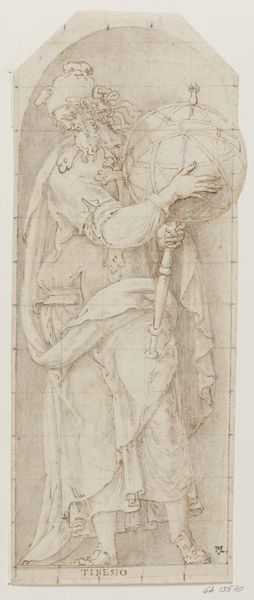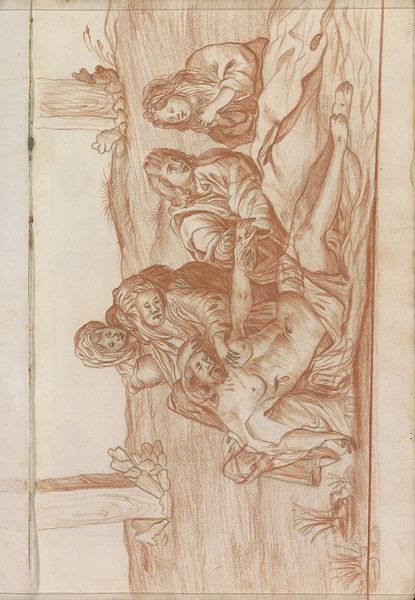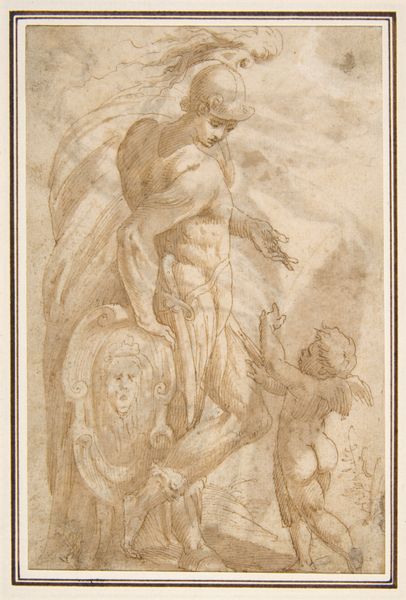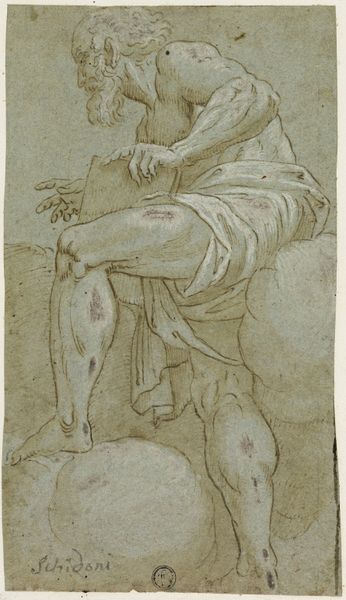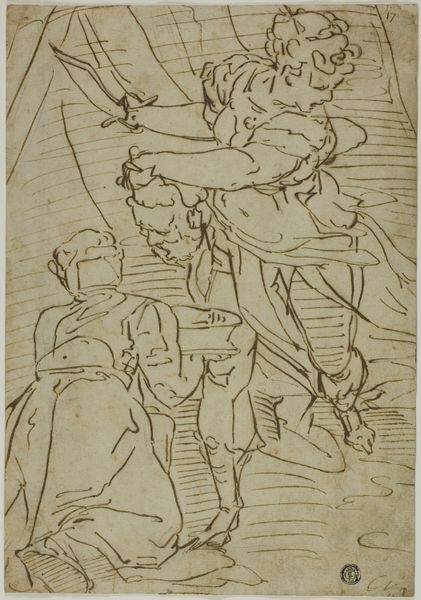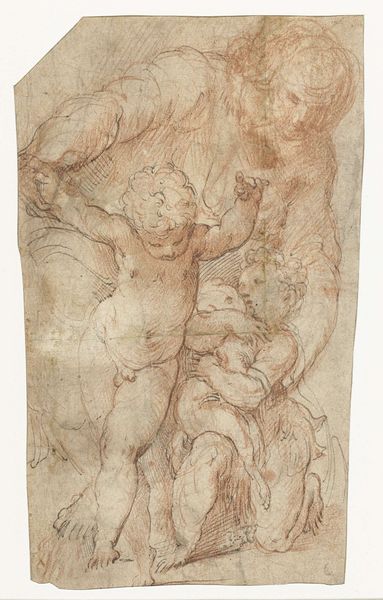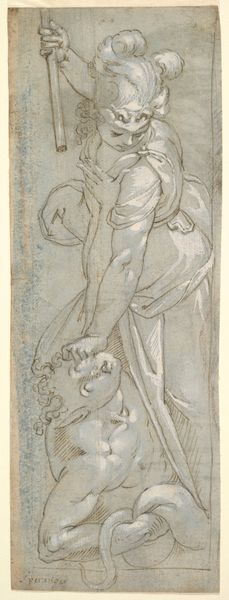
drawing, print, paper, ink, pencil, chalk, charcoal
#
portrait
#
drawing
#
ink painting
# print
#
pencil sketch
#
classical-realism
#
charcoal drawing
#
figuration
#
paper
#
charcoal art
#
ink
#
pencil
#
chalk
#
charcoal
#
history-painting
Dimensions: 387 × 121 mm
Copyright: Public Domain
Editor: This is "Three Roman Soldiers," a drawing by Giovanni da Bologna. It’s undated, and it's done with ink, pencil, chalk and charcoal on paper. I’m immediately struck by how unfinished it seems. What do you see in this piece, especially with its clear reference to antiquity? Curator: I see the visual language of power being carefully constructed and negotiated. Notice how Bologna uses the symbols of Roman military authority—the helmets, the shields, the muscular bodies – to evoke a sense of strength and order. Yet, as you mentioned, there's a rawness here. The sketch-like quality reveals the artistic process, hinting at the artist's thought process. It reminds us that even symbols of power are constructed, not absolute. Editor: Constructed? Could you elaborate on that a bit? I suppose I had assumed the imagery would be about confidence. Curator: Consider the expressions on the soldiers' faces. Are they confident, or are they stoic, perhaps even burdened by their responsibilities? And the way they're positioned – the one in front almost shielding the others. Is this an image of triumphal strength or of wary defense? The symbols themselves are only potent because of the meaning we assign to them over time. What does the "Roman soldier" mean now, compared to its original cultural context? Editor: That's fascinating. I hadn’t considered that the imagery might be interpreted as something other than strength. The uncertainty in their faces definitely changes how I view the work. Curator: It prompts us to question the narratives we associate with those symbols, the relationship between representation and reality. It speaks volumes about the staying power and mutable meaning of images. Editor: It's amazing how a seemingly simple drawing can open up so many avenues of thought about culture and power. Curator: Exactly! And that’s why understanding symbols is key to unlocking deeper layers of meaning in art across time and cultures.
Comments
No comments
Be the first to comment and join the conversation on the ultimate creative platform.
